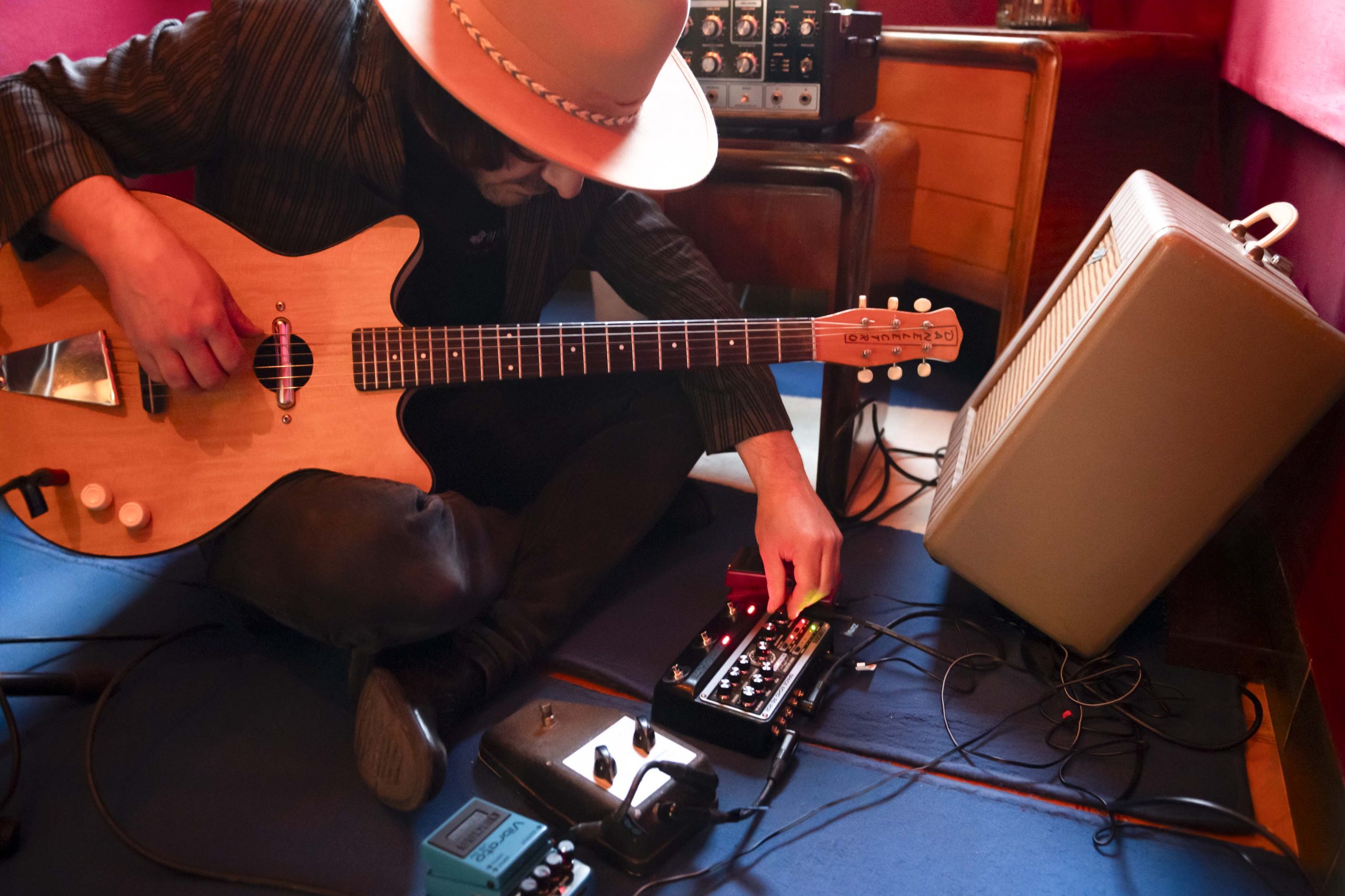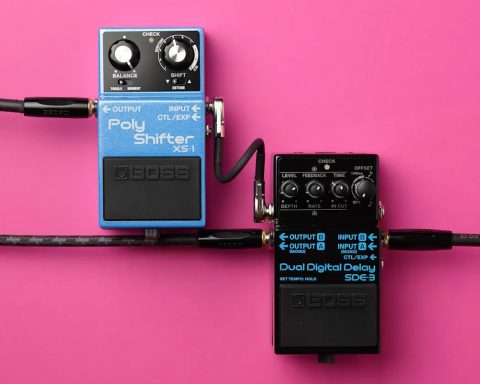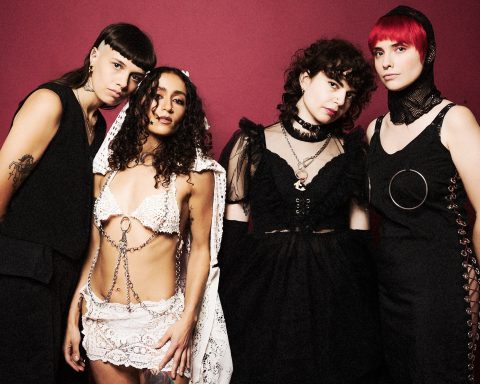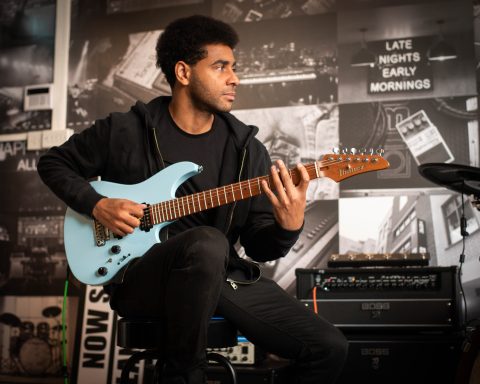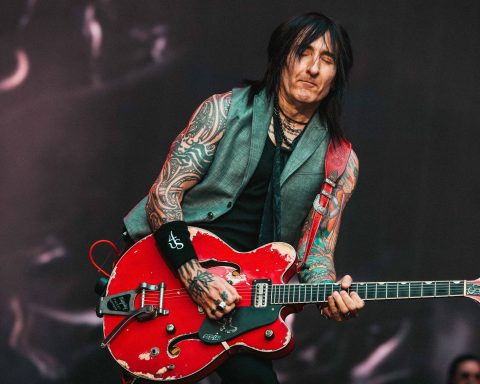“This mysterious and beautiful music by Alessandro Stefana entrances me,” remarked PJ Harvey, executive producer of the maestro’s latest solo album—the self-titled Alessandro “Asso” Stefana. “Achingly beautiful music from my beautiful friend,” echoed Mike Patton. Released last year to glowing reviews, the album captures Asso’s unmistakable touch as composer and sonic architect. In the interview that follows, he opens up about his long-standing relationship with Roland and BOSS gear—and why it remains essential to the way he creates and performs music.
Inventive Spirit
Alessandro “Asso” Stefana is an Italian guitarist, composer, and producer known for his inventive spirit and exceptional sound. A student of classical guitar but never bound by tradition, he draws from folk, blues, film scores, psychedelia, and ambient music to create something entirely his own—music that resists easy categorization and always feels deeply personal.
Alongside his solo output, he’s collaborated with artists such as PJ Harvey, Mike Patton, Calexico, and Penguin Café, and co-founded Guano Padano—an acclaimed project featuring guests like Marc Ribot and Bill Frisell.
In addition to his performance work, Asso has composed music for films (Billy, I Pionieri) and video games (Crew 2), crafting rich sonic atmospheres tailored to screen and story. As a producer, he’s contributed to a range of notable releases, including Micah P. Hinson’s I Lie to You, and has maintained a long-standing creative partnership with Italian songwriter Vinicio Capossela.
With an ever-evolving career, Asso continues to challenge convention and inspire with his boundary-pushing musical vision.
Italian Roots
Tell us about your work with Mike Patton.
In 2009, I recorded with Mike Patton from Faith No More for his project Mondo Cane—an album of Italian songs from the golden age of Italian pop in the ’50s and ’60s. Around that time in Italy, we had great music: composers and arrangers like Luis Bacalov, Piero Piccioni, Piero Umiliani, and many others.
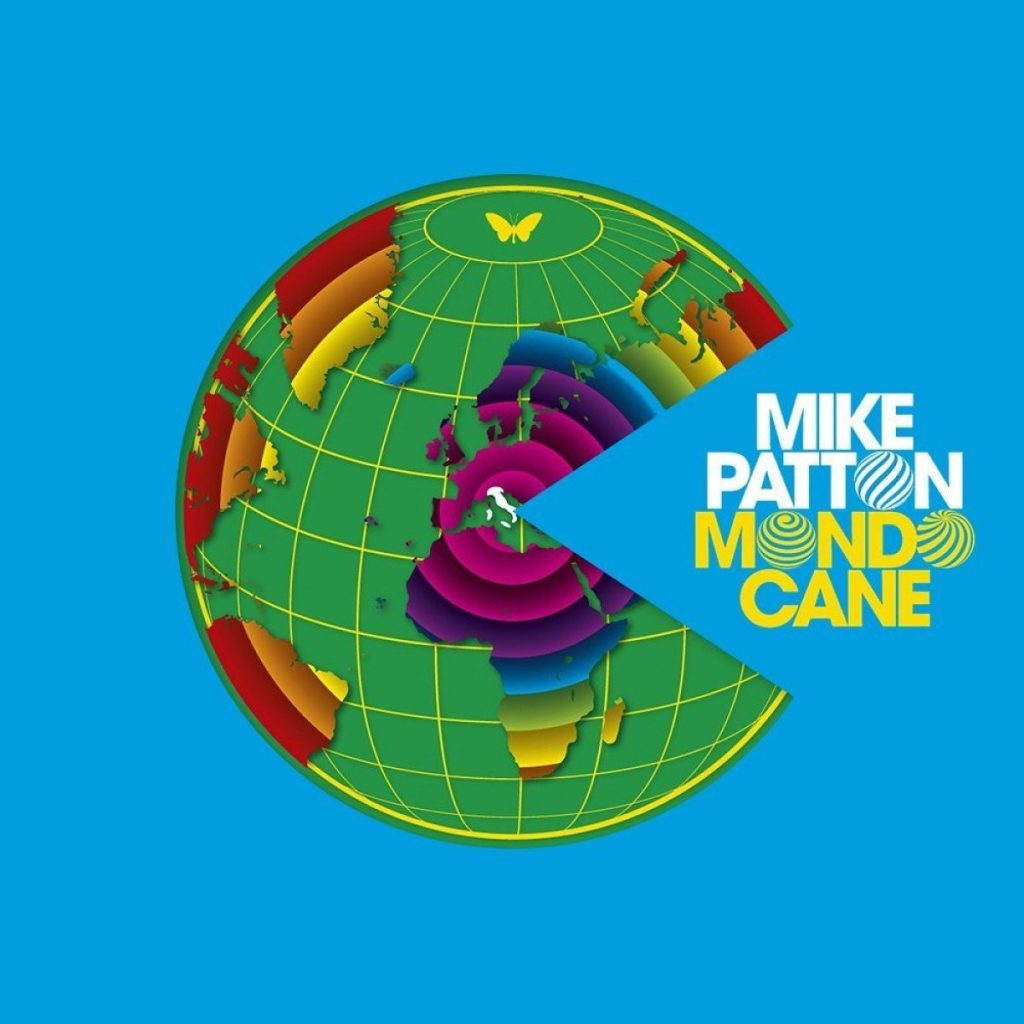
Of course, Ennio Morricone played a key role in this, so there are some tracks of his on this album and some amazing arrangements of other songs. Mike visited Italy a lot then, so he knew a lot about Italian music.
I worked on this project worldwide from 2009, and in 2012, we played in Sydney, Australia. When I arrived at the theater, I saw PJ Harvey was playing the night after us. I was in contact with her collaborator John Parish, and wrote him an email asking if he would like to come to the show.

Enter PJ Harvey
Did John Parish accept your invitation?
John and Polly came along to the gig, which had a string orchestra, horns, and choir. Then, a few years later, she asked John to call me about working on her record, The Hope Six Demolition Project.
Tell us about recording PJ Harvey’s The Hope Six Demolition Project.
It was really cool because it wasn’t done in a regular studio. It was recorded in London at Somerset House as an art installation that was open to the public. People paid for a ticket and could see us recording, but we couldn’t see them; it was one-way glass.
Did that situation affect your performance?
Not really, because we didn’t know when people were there watching us. It was a cool experience. We recorded completely live with John Parish and Flood producing. Even all the vocal takes were live.
BOSS Across the Board
Which BOSS pedals were you using at the time?
It’s hard to remember exactly, but I definitely had my SD-1 Super Overdrive.
What were your first BOSS pedals?
I have used BOSS pedals from the beginning. When I first started playing electric guitar, it seemed that only BOSS pedals were available. In the beginning, all my pedals were BOSS. I got the SD-1 Super Overdrive, TR-2 Tremolo, and PSM-5 Power Supply & Master Switch.
After that, I got the LS-2 Line Selector, which I used to switch between two different amps. I also use a TU-2 Chromatic Tuner that I’ve had for about 20 years. I still have these old BOSS pedals. I use them a lot.
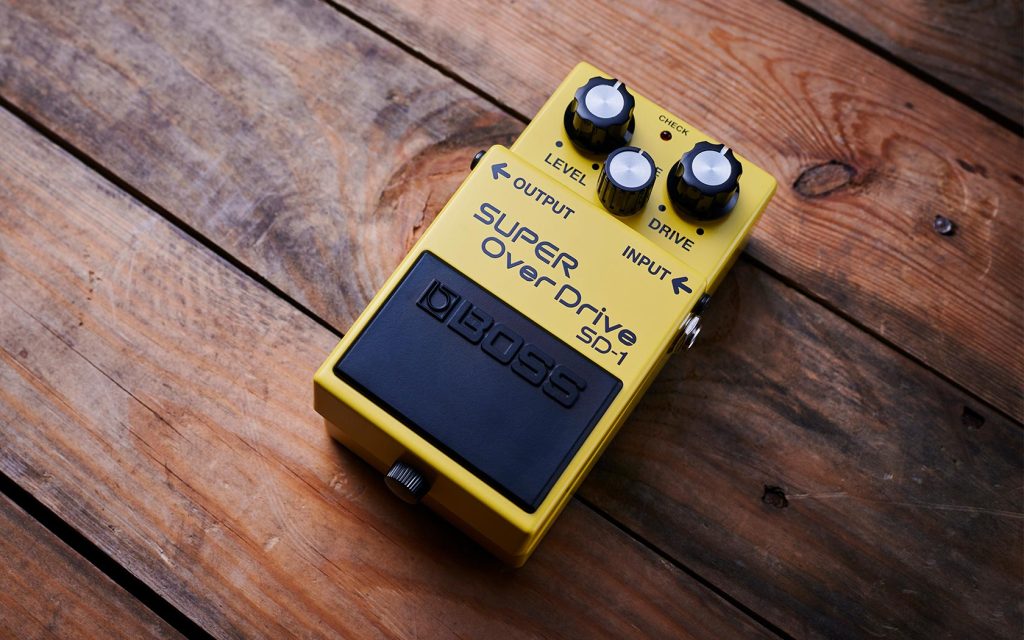
Blues Driver Blues
Have your BOSS pedals proved reliable?
I’ve never had a single issue with any of them in my life. It’s incredible. They’re super quiet as well. I once tried a different tuner, and it was terrible because it was so noisy. Then, I discovered the tuning was inaccurate, so I returned to using my old BOSS tuner pedal. If I needed to buy another one, I would check out the Waza Craft TU-3W Chromatic Tuner.
Are there any BOSS pedals you would like to add to your collection?
I got a BD-2 Blues Driver, but I sold it, which was a shame because it’s really cool. I want to get another one. The BD-2 produces super dynamic distortion.
It’s quite a unique overdrive sound. I sold it when I bought an original Klon Centaur years ago, but I started to miss the BD-2 immediately.
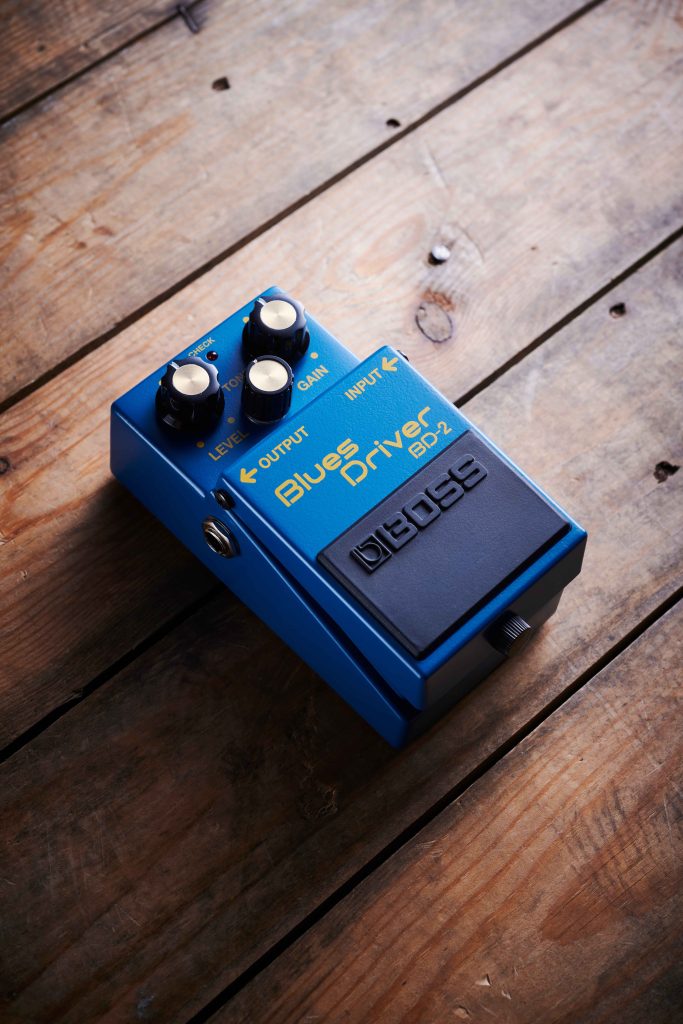
Top BOSS
What’s your favorite overdrive pedal?
I like to try a lot of different overdrives. Sometimes, I’ll set up five or six and switch between them to better understand the differences. But my favorite is the SD-1 Super Overdrive—I love it.
That SD-1 sound stuck in my mind when I was younger and is still my favorite. It’s funny how musicians often return to the first pedals they use. It’s locked in the memory.
Which BOSS modulation pedals do you like?
I don’t use a lot of modulation, but I love the VB-2W Vibrato. To my ears, chorus and flanger effects sound very ‘80s. My Roland RE-301 Chorus Echo tape echo unit has chorus built in, but I don’t use it; I just use the delay and spring reverb.

Vibrato has much more of a ’60s vibe, which is really my thing. I love the ’60s era—specifically ’62 to ’67. My favorite guitars are from that era. I don’t buy guitars from after ’67.
Golden Era Guitars
Tell us about your guitar collection.
I have a ’65 Fender Jaguar and ’65 Fender Jazzmaster. I’m a big fan of sunburst guitars, and I like those Fender offset tremolo systems. I’m using a Mastery Bridge with them at the moment.
I also have instruments by Silvertone and Danelectro with the wonderful old lipstick pickups, a weird Teisco, a Burns, an old Kay Thin Twin from the ’50s, a 1964 Gretsch Chet Atkins, and some other obscure guitars. Live, I often play a guitar made by the Italian firm Billy Boy.
What basses do you own?
I have an old Italian-made Vox hollowbody bass and a Fender Mustang Bass. They both sound great. I don’t use flatwound strings on my electric guitars, but I do use flatwound strings on my basses.
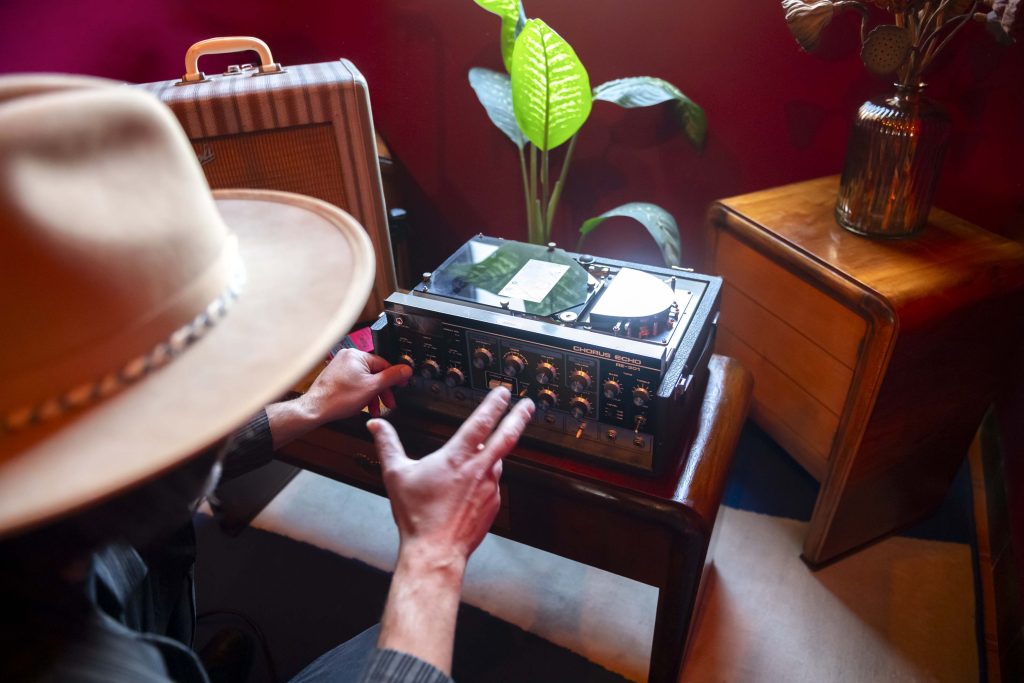
Great Tone Comes First
How have you used Roland and BOSS effects to record?
I like to use the Roland RE-301 tape echo a lot. Recordings with the RE-301 sound really cool. I love that machine. It sounds fantastic with drums—the preamp, reverb, and echo. The preamp warms up the signal and brings it to life, and the EQ section works really well.
I love basic EQs like the Bass and Treble controls on the RE-301. These days, with digital technology, there can sometimes be too many options—like never-ending work to make a decision.
Really, it’s better to get your sound right from the beginning, so you don’t have to change it too much later on. I’m very careful about recording technique. For me, it’s all about getting the sound right to begin with. If you have a clear idea of what you want and record it properly, it’s already mixed. It can cost you more time trying to mix something that was never right to begin with.
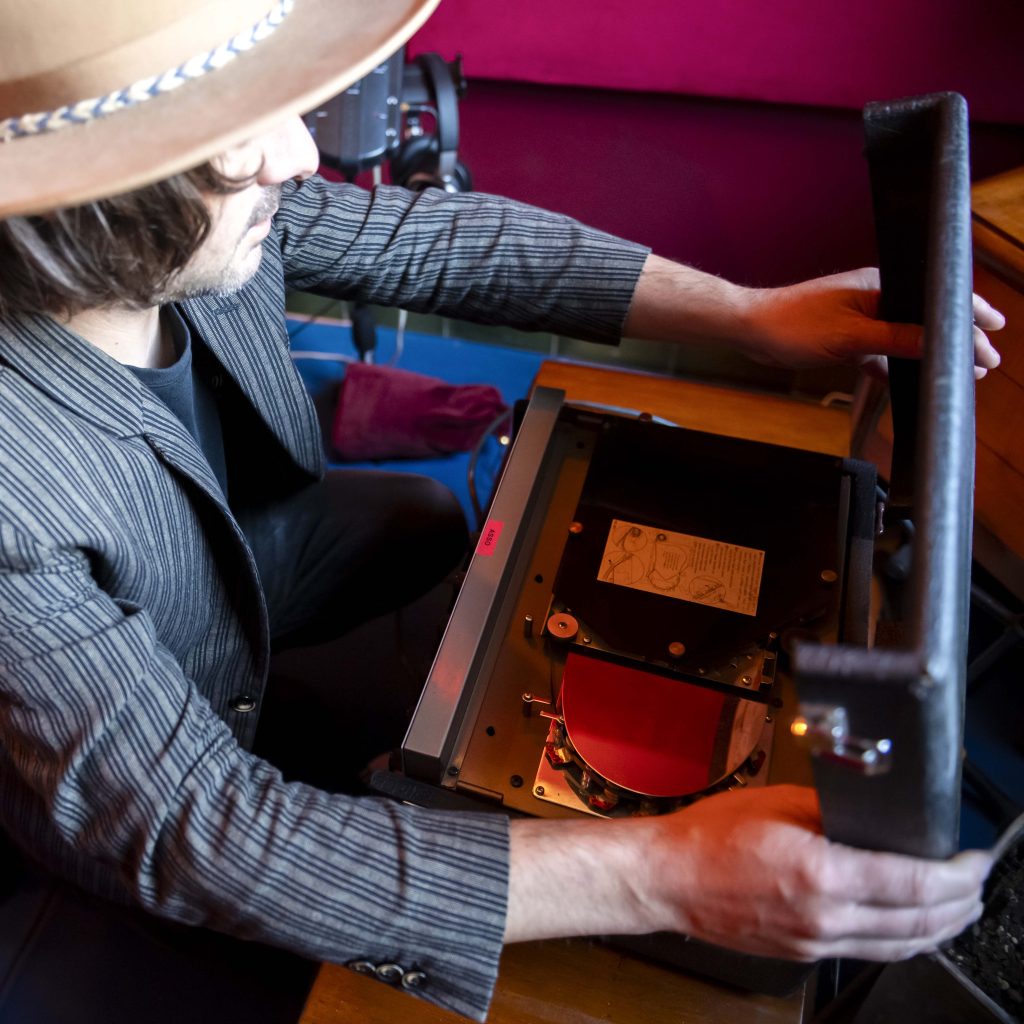
Studio Secrets
Do you track drums with the RE-301 effect applied?
I record the drums with the effects in mind and process the tracks afterwards. I mix it in stereo with the original sound going through the preamp panned to the left, and the echoes panned to the right.
A good example of that would be a recording my band Guano Padano made called “El Cayote.” On that track, all the drums are going through the RE-301.
What are some of your favorite features of the Roland RE-301 Chorus Echo?
I love that you can alter the Repeat Rate while it’s running. You can create some interesting textures and sounds by altering the speed that way. And I love the Sound on Sound mode—especially how the sound degrades over time.
How do you like to use the Space Echo effect with guitar?
I like to use it on guitars with a stereo output using two amplifiers. It’s similar to how I process drums using the RE-301—one side is dry and the other has the effect applied. When I tried the BOSS RE-202 Space Echo pedal, I was so impressed by the sound—how close it is to the original Roland tape echo. I like using the Roland unit in my live set, but the BOSS RE-202 sounds amazing.
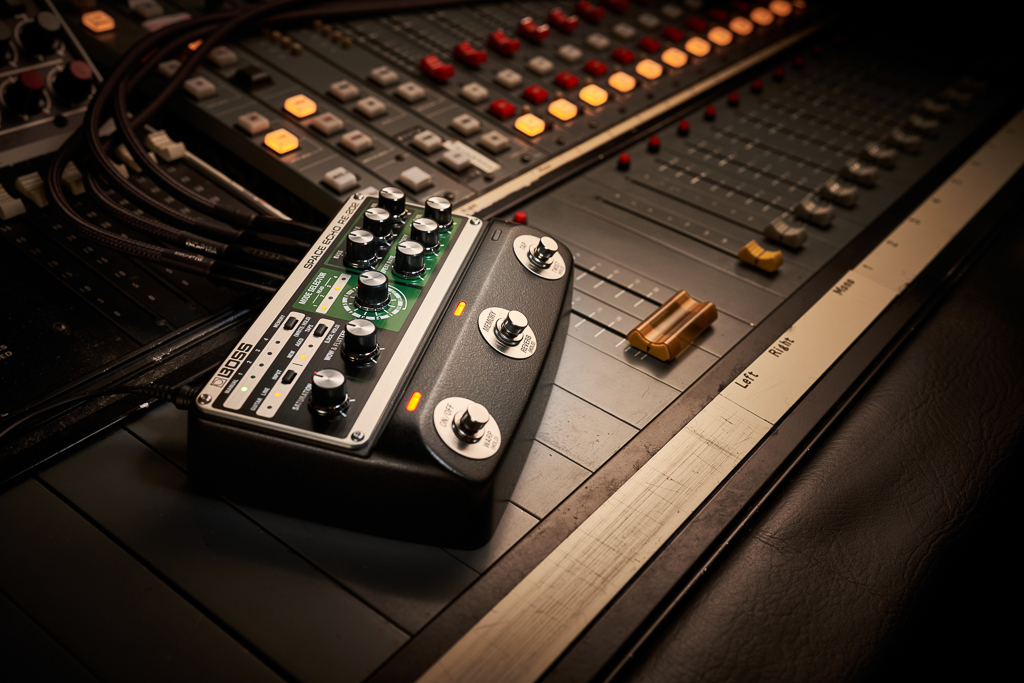
Essential BOSS Delays
Which BOSS delay pedals do you like the most?
I really love the DM-2W Delay. My friend Joey Burns of Calexico is also a big fan of the original DM-2 Delay. I love the slapback sound you can get with those. It’s a really unique flavor of delay. Some delay pedals sound too sharp, some are too smooth, but the DM-2 is perfect.
I also really love the DD-3 Digital Delay. I’ve used that pedal for many years. It’s a classic! That was one of my first delay pedals. The DD-3T is a good upgrade; I often use tap tempo with delays.
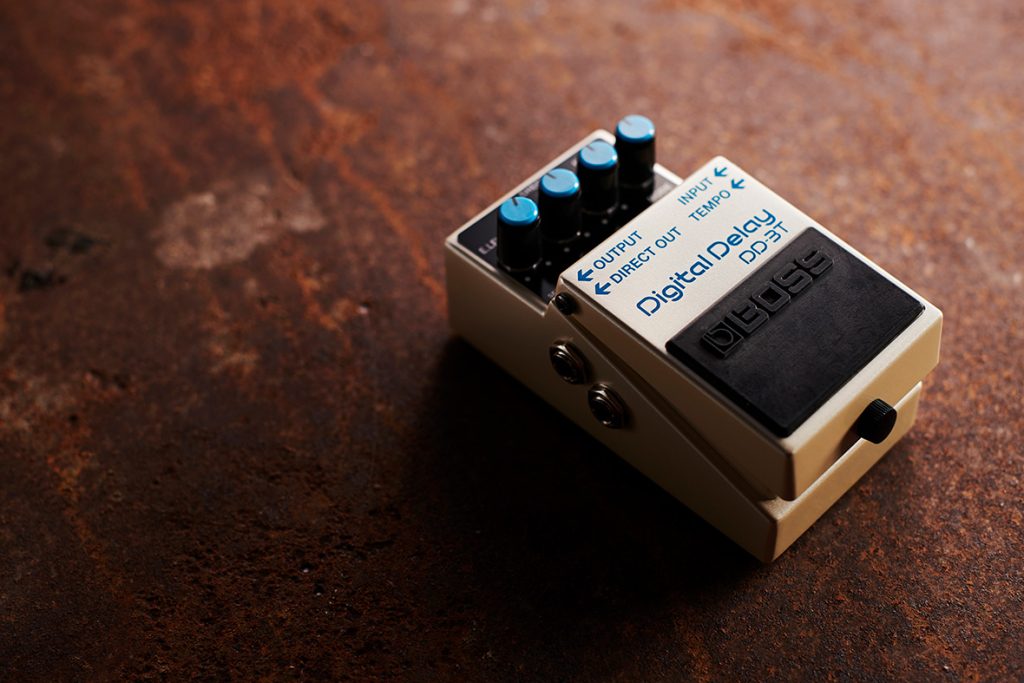
Do you have any delay studio tricks to share?
Sometimes, I’ll combine two different delays. For example, I might record a guitar using a slapback sound and then apply a longer delay to it afterwards—something with a different flavor, maybe. Using a different tempo creates movement, and the interplay can sound interesting.
Another cool thing is to send a reverb track into a delay; take a 100 percent wet reverb track and send it through a delay. I’ll sometimes do that for drums. I love to spread the sound of drums out to create depth and dimension. Space Echo is incredible for drums, piano, keys, vocals, and guitar. It’s so versatile.
